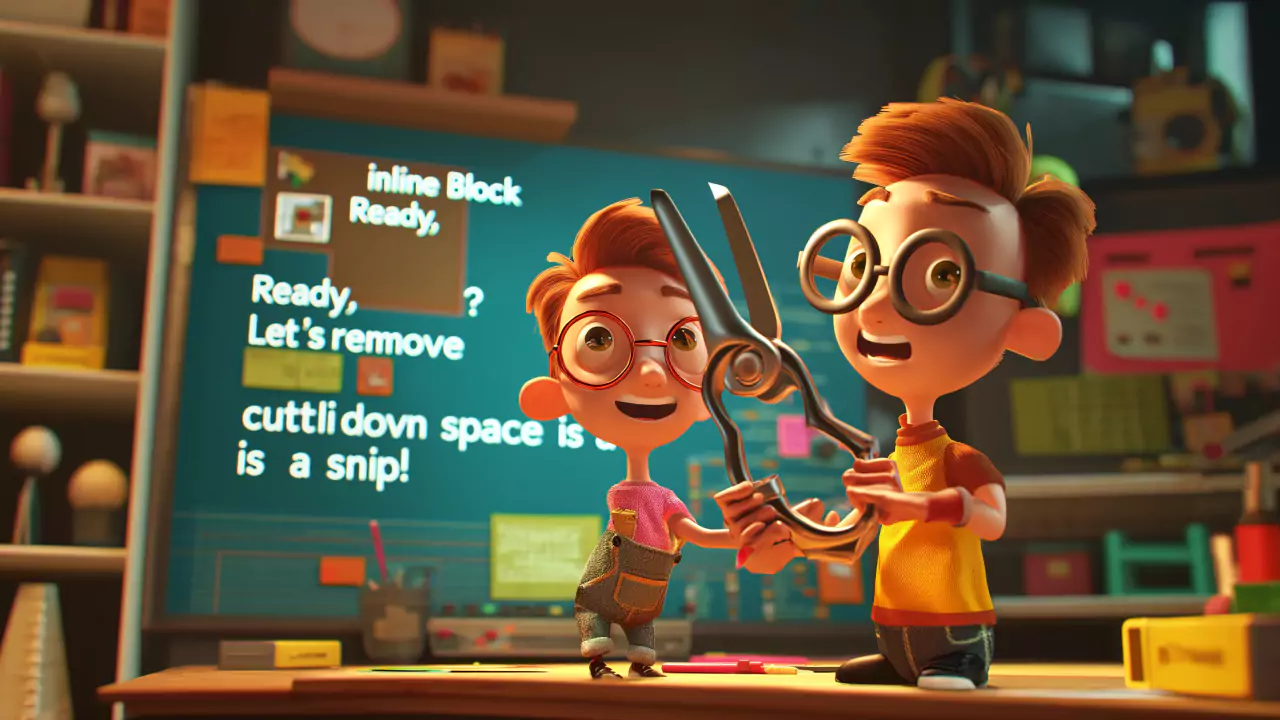Table of Contents
When working with CSS, one common challenge is managing the space between elements, especially when using inline or inline-block display. This article explores various CSS techniques to effectively remove unwanted space between elements, ensuring a clean and precise layout.
Understanding the Issue of Spacing in CSS
Before delving into the solutions, it’s crucial to understand why unwanted space appears between elements. In CSS, elements like span or div can often have default margins or padding, and when set to inline-block, additional spacing can occur due to whitespace in the HTML. This space, while seemingly small, can disrupt the layout and aesthetics of a webpage.
Example: Demonstrating the Space Issue
<div class="container">
<div class="item">Item 1</div>
<div class="item">Item 2</div>
<div class="item">Item 3</div>
</div>.item {
display: inline-block;
margin: 5px;
background-color: lightblue;
}CSS Solutions to Remove Space Between Elements
Using Flexbox
One of the most effective ways to address spacing is by using Flexbox. Flexbox layout provides more control over the alignment and spacing of elements without the complexities of inline-block layouts.
Example: Using Flexbox
.container {
display: flex;
}
.item {
background-color: lightblue;
}Setting Font-Size to Zero
Another technique involves setting the font-size of the parent element to zero. This approach effectively eliminates whitespace caused by inline-block elements.
Example: Font-Size Zero Technique
.container {
font-size: 0;
}
.item {
font-size: 16px; /* Resetting the font size */
}Using Grid Layout
The CSS Grid Layout is a powerful tool for controlling space between elements, offering precise control over the layout and spacing.
Example: Grid Layout for Spacing Control
<div class="container">
<div class="item">A</div>
<div class="item">B</div>
<div class="item">C</div>
</div>.container {
display: grid;
grid-gap: 0;
}
.item {
background-color: skyblue;
padding: 10px;
}In this example, using grid-gap: 0 ensures that there is no space between grid items, providing a sleek and compact layout.
Negative Margin Method
Applying a negative margin to elements can also pull them closer together, effectively reducing the space between them.
Example: Negative Margin Approach
.item {
margin-right: -4px;
}When to Use These Techniques
It’s important to choose the right method depending on the layout requirements and the existing CSS codebase. Flexbox is ideal for dynamic layouts, while the font-size and negative margin methods are quick fixes for simpler designs. The Grid Layout is perfect for more complex arrangements requiring precise control.
FAQs
How to remove space between elements in CSS?
Use Flexbox or set font-size: 0 on the parent element and reset it for children.
How to remove space between two elements in CSS?
Apply negative margins to the elements or use Flexbox for better control.
What causes space between elements in CSS?
Default margins, padding, and whitespace in HTML can create space between elements.
Can CSS alone fix space issues between elements?
Yes, CSS techniques like Flexbox or font-size adjustments can effectively solve spacing issues.
Is there a space remover generator in CSS?
While there’s no specific tool, methods like negative margin or Flexbox act as space removers.
Conclusion
Understanding and applying these CSS techniques can significantly improve the visual consistency of web layouts. The key is to experiment and find the most suitable solution for your specific design requirements.
